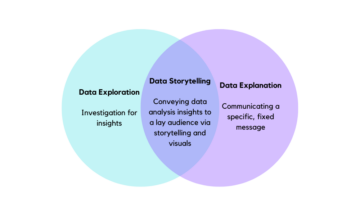
Digital assets have experienced a turbulent 12 months with multiple bankruptcies, fraud cases and regulatory actions dampening enthusiasm.
Despite this, the finance industry continues to explore Web3 opportunities and one of the technologies piquing the most interest is tokenization.
Leaders at large institutional players such as
Blackrock and
Goldman Sachs have spoken about tokenization’s potential to transform capital markets, while
analysts forecast that $4 trillion to $5 trillion of tokenized digital securities could be issued by 2030.
Tokenizing real-world assets such as real estate, private equity and private debt could improve access to these markets and make trading much faster and simpler.
But tokenization only comes at the end of a private markets transaction. To make it a reality, we firstly need to focus on digitizing and automating private markets’ infrastructure.
Bearer vs registered instruments
Before we can talk about the potential of tokenization in private markets, it’s important to differentiate between bearer instruments and registered instruments.
With bearer instruments, whoever holds the asset is the owner. For example, if you give someone a coin, they become the owner, without a record trace.
Registered instruments have a centralized list of asset owners. If an individual loses the asset, the register can prove they are still the owner.
Bearer instruments have all but become extinct over the last 300 years due to the obvious impracticalities and security risks of ownership being solely established by possession.
Despite this, tokenization to date has focused largely on bearer instruments – notably cryptocurrencies – which aren’t compliant with most sets of securities regulation and investor compliance requirements, preventing institutional investors from engaging with this market.
The potential of tokenization in private markets
In recent years there’s been much speculation that tokenization can transform capital markets, delivering greater interoperability and control to investors. However, for this to happen, we need to change our approach.
Tokens should be a representation of the security, rather than the security itself. This means the asset moves away from being a bearer instrument, to instead become a registered instrument, which opens a world of opportunities for the technology.
Public markets are already very efficient. Of course, improvements are always possible, but the real opportunity lies in private markets, which are highly inefficient. Blockchain technology, or tokenization, is one tool that can assist with part of that process
In my view, there are three use cases for tokenization in private markets:
1. One-to-one exchange of assets – When transacting in private markets, there is usually an intermediary such as a broker or law firm in the middle to ensure both sides meet their end of the deal, before settling the transaction. With blockchain technology, a digital smart contract can perform that intermediary function instead, automatically receiving and swapping out two smart contracts each representing the asset and the cash. This cuts transaction time from weeks to a few seconds, while eradicating intermediary fees.
2. Private asset trading – If a firm wants to allow unlimited transactions in their private shares, they could tokenize their shares and share them with a digital exchange. This allows investors to be in full control of where they seek liquidity, rather than relying on an intermediary acting in an opaque manner. However, this is only relevant for the largest assets – most don’t have sufficient liquidity demand to warrant continuous trading.
3. Transactions between institutions – For institutions, many of these transactions go through SWIFT rails and are settled through custodians. With a tokenized asset, similar to the one-to-one exchange of assets above, a smart contract can be a more efficient settlement and reconciliation mechanism.
To tokenize, first we must digitalize
Tokenization is a useful toolkit at the point of transaction itself. However, in order for blockchain to function, the underlying asset itself has to first be digitized. This is already true for public markets with the register held at a Central Securities Depositary (a process generally referred to as “dematerialized”), which is why public markets are already quite efficient.
Private markets, on the other hand, despite being a huge driver of economic activity, representing an
estimated $22.6 trillion in AUM, typically involve paper certificates, a securities register held in an Excel file or other medium not automatically updateable, and therefore requires manual human intervention to update the owner in a secondary transaction.
Technology now exists which digitizes private securities end-to-end, and fully automates the processes involved in settling private markets transactions, even including high friction points such as stamp duty and stock transfer forms.
Once a private markets asset has been digitized and connected to automated workflows, then tokenization can be overlayed on top to enable highly efficient transfers.
Tokenization works under existing securities legislation
Regulators in most major jurisdictions have been considering new securities legislative frameworks to accommodate tokenization, but tokenization itself is the technology medium.
It would be similar to creating regulation around a SQL database (a type of data storage) – which has never been done by any country, nor should it. This clearly needs a rethink.
A security digitized in the right way is still a registered security, meaning it complies with all existing securities legislation. In the UK for example, Companies Act specifies the contents that a share register must contain, but it does not specify – and it shouldn’t – the medium on which that register should be stored.
The digitization of private markets has already started, and it’s a juggernaut that’s only just beginning to gain speed. The implications for the future of the global economy are astounding and exciting.
Private companies collectively form the largest employer in most major economies – with the capital formation of those companies becoming better, the future is looking bright.
- SEO Powered Content & PR Distribution. Get Amplified Today.
- PlatoData.Network Vertical Generative Ai. Empower Yourself. Access Here.
- PlatoAiStream. Web3 Intelligence. Knowledge Amplified. Access Here.
- PlatoESG. Carbon, CleanTech, Energy, Environment, Solar, Waste Management. Access Here.
- PlatoHealth. Biotech and Clinical Trials Intelligence. Access Here.
- Source: https://www.finextra.com/blogposting/25189/can-tokenization-transform-private-markets?utm_medium=rssfinextra&utm_source=finextrablogs
- :has
- :is
- :not
- :where
- 12
- 12 months
- 2030
- 300
- a
- About
- above
- access
- accommodate
- Act
- acting
- actions
- activity
- All
- allow
- allows
- already
- always
- an
- Analysts
- and
- any
- approach
- ARE
- around
- AS
- asset
- Assets
- assist
- astounding
- At
- Automated
- automates
- automatically
- automating
- away
- bankruptcies
- BE
- Bearer
- become
- becoming
- been
- before
- Beginning
- being
- Better
- between
- blockchain
- blockchain technology
- both
- Both Sides
- Bright
- broker
- but
- by
- CAN
- capital
- capital formation
- Capital Markets
- cases
- Cash
- central
- centralized
- certificates
- change
- Citigroup
- clearly
- CNBC
- Coin
- collectively
- comes
- Companies
- compliance
- compliant
- complies
- connected
- considering
- contain
- contents
- continues
- continuous
- contract
- contracts
- control
- could
- country
- course
- Creating
- cryptocurrencies
- custodians
- cuts
- data
- data storage
- Database
- Date
- deal
- Debt
- delivering
- Demand
- Depositary
- Despite
- differentiate
- digital
- Digital Securities
- digitization
- digitized
- digitizing
- does
- don
- done
- driver
- due
- each
- Economic
- economies
- economy
- efficient
- enable
- end
- end-to-end
- engaging
- ensure
- enthusiasm
- equity
- established
- estate
- estimated
- Ether (ETH)
- Even
- example
- Excel
- exchange
- exciting
- existing
- exists
- experienced
- explore
- EY
- faster
- Fees
- few
- File
- finance
- Finextra
- Firm
- First
- firstly
- Focus
- focused
- For
- Forbes
- form
- formation
- forms
- frameworks
- fraud
- friction
- from
- full
- fully
- function
- future
- Gain
- generally
- Give
- Global
- Global economy
- Go
- goldman
- greater
- hand
- happen
- Have
- Held
- High
- highly
- holds
- However
- HTML
- HTTPS
- huge
- human
- if
- implications
- important
- improve
- improvements
- in
- Including
- individual
- industry
- inefficient
- Infrastructure
- instead
- Institutional
- institutional investors
- institutional players
- institutions
- instrument
- instruments
- interest
- intermediary
- Interoperability
- intervention
- investor
- Investors
- involve
- involved
- Issued
- IT
- itself
- jpg
- jurisdictions
- just
- large
- largely
- largest
- Last
- Law
- law firm
- Legislation
- Legislative
- lies
- Liquidity
- List
- looking
- Loses
- major
- make
- manner
- manual
- many
- Market
- Markets
- meaning
- means
- mechanism
- medium
- Meet
- Middle
- months
- more
- more efficient
- most
- moves
- much
- multiple
- must
- my
- Need
- needs
- never
- New
- nor
- notably
- now
- obvious
- of
- on
- ONE
- only
- opaque
- opens
- opportunities
- Opportunity
- or
- order
- Other
- our
- out
- over
- owner
- owners
- ownership
- Paper
- part
- perform
- plato
- Plato Data Intelligence
- PlatoData
- players
- Point
- points
- possession
- possible
- potential
- preventing
- private
- Private Equity
- private markets
- process
- processes
- Prove
- public
- quite
- rails
- rather
- real
- real estate
- real world
- Reality
- receiving
- recent
- reconciliation
- record
- referred
- register
- registered
- Regulation
- regulatory
- relevant
- relying
- representation
- representing
- Requirements
- requires
- right
- risks
- s
- secondary
- seconds
- Securities
- security
- security risks
- Seek
- Sets
- Settled
- settlement
- settling
- Share
- Shares
- should
- Sides
- similar
- simpler
- smart
- smart contract
- Smart Contracts
- solely
- Someone
- speculation
- speed
- spoken
- SQL
- stamp
- started
- Still
- stock
- storage
- stored
- such
- sufficient
- swapping
- SWIFT
- T
- Talk
- Technologies
- Technology
- than
- that
- The
- The Capital
- The Future
- The Register
- the security
- the UK
- their
- Them
- then
- There.
- therefore
- These
- they
- this
- those
- three
- Through
- time
- to
- Tokenization
- tokenize
- tokenized
- tool
- toolkit
- top
- trace
- Trading
- transacting
- transaction
- Transactions
- transfer
- transfers
- Transform
- Trillion
- true
- turbulent
- two
- type
- typically
- Uk
- under
- underlying
- unlimited
- Update
- use
- useful
- usually
- very
- View
- vs
- wants
- Warrant
- Way..
- we
- Web3
- Weeks
- when
- which
- while
- whoever
- why
- with
- without
- workflows
- works
- world
- would
- years
- you
- zephyrnet











